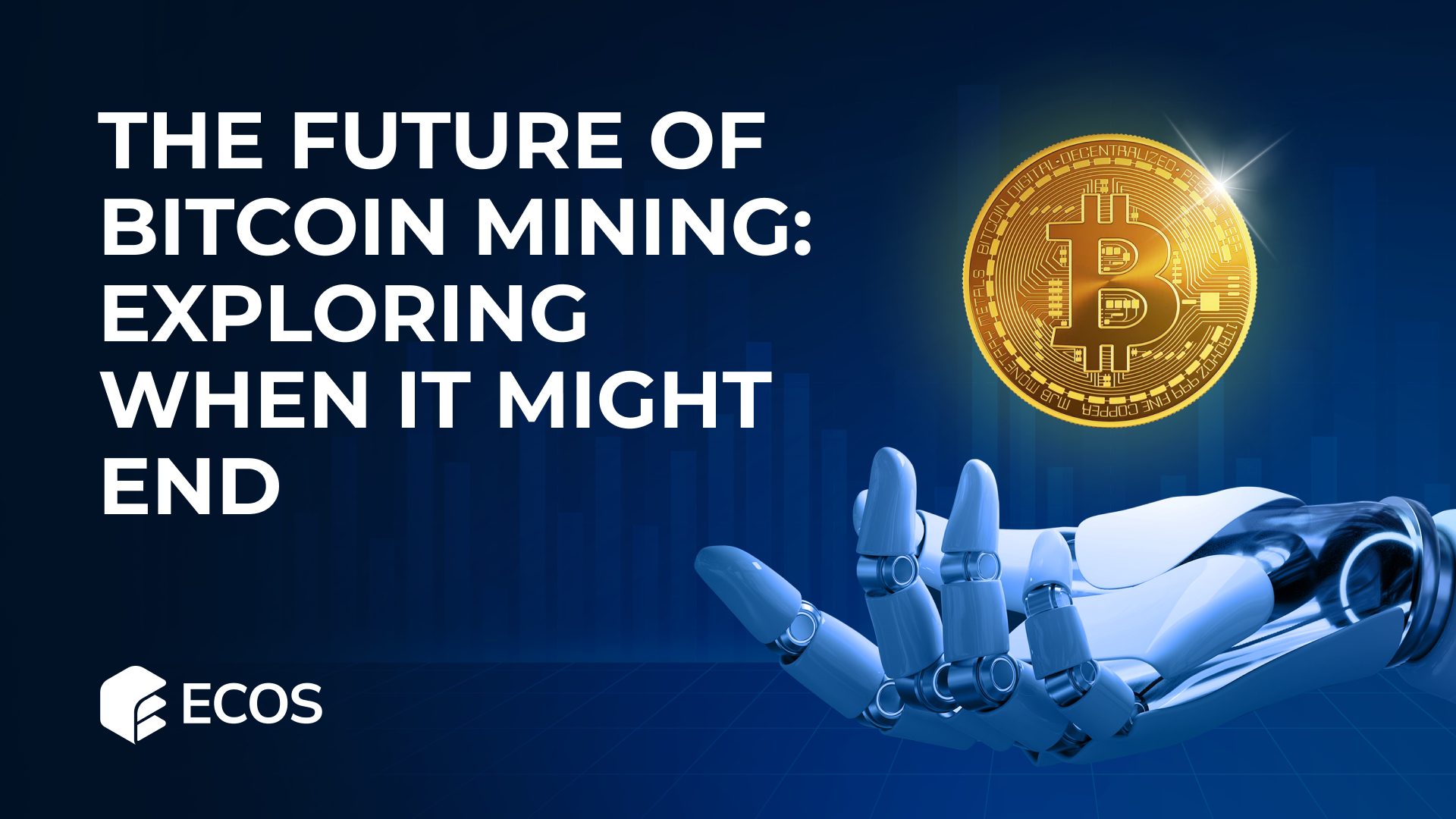The Future of Bitcoin Mining: Exploring When It Might End

Key Takeaways
-
Halving Events and Scarcity Influence: Bitcoin's programmed scarcity through halving events, reducing mining rewards, and a limit of 21 million coins shape the mining landscape. Miners may increasingly rely on transaction fees as rewards diminish.
-
Tech Advancements vs. Environmental Concerns: Evolving mining tech, notably ASIC miners, raises concerns about centralization. Balancing technological progress with the environmental impact of energy consumption remains a significant challenge.
-
Uncertain Future with Diverse Factors: The future of Bitcoin mining is uncertain due to various factors like alternative consensus mechanisms, regulatory challenges, and community opinions. Multiple scenarios exist, including a shift to eco-friendly practices or innovations beyond traditional mining.
The Future of Bitcoin Mining: When Will It End?
Bitcoin, the revolutionary digital currency, has taken the world by storm since its inception. One of the critical aspects of the Bitcoin network is mining, a process that secures transactions and issues new bitcoins. However, an intriguing question looms over the horizon: When will bitcoin mining end? In this article, we’ll explore the dynamics of bitcoin mining, the factors influencing its future, and the potential scenarios surrounding its cessation.
Introduction
Bitcoin mining, often depicted as a complex process, is essentially the backbone of the entire Bitcoin ecosystem. Miners utilize powerful computer systems to solve complex mathematical problems, validating transactions and adding them to the blockchain, the distributed public ledger. However, the very foundation of mining is tied to a unique event called the “halving.”
Understanding Bitcoin Mining
Bitcoin mining involves miners competing to solve mathematical puzzles, with the winner adding the next block of transactions to the blockchain. This process rewards miners with newly minted bitcoins and transaction fees. However, the rewards aren’t constant due to the halving event that occurs approximately every four years.
The Bitcoin Halving Event
The halving event cuts the mining rewards in half, reducing the rate at which new bitcoins are created. This event is coded into the Bitcoin protocol to ensure a limited supply of bitcoins (21 million). As a result, the halving has a significant impact on mining economics and the scarcity of bitcoins.
Current State of Bitcoin Mining
At present, the mining landscape has transformed from solo miners to large-scale mining farms. These farms house powerful hardware designed specifically for mining. This centralization has raised concerns about the democratization of mining and the concentration of power.
Energy Consumption Concerns
Bitcoin mining’s energy consumption has drawn both fascination and criticism. Critics argue that the energy usage is unsustainable, while proponents highlight the increasing use of renewable energy sources. Balancing energy consumption and sustainability is a key challenge for the future of mining.
Technological Advancements in Mining
Mining hardware has evolved over the years, becoming more efficient and powerful. ASIC (Application-Specific Integrated Circuit) miners dominate the scene, outperforming traditional CPUs and GPUs. Continued technological advancements will play a role in shaping the future of mining.
Finite Supply of Bitcoins
Bitcoin’s scarcity is a defining feature, with only 21 million bitcoins ever to be mined. As mining rewards decrease over time, miners might shift their focus from block rewards to transaction fees. This transition could influence the longevity of mining operations.
Rise of Alternative Mining Methods
In recent years, alternative consensus mechanisms like proof-of-stake (PoS) have gained attention. PoS requires participants to hold a certain number of coins, reducing energy consumption. This shift might impact the trajectory of traditional mining.
Environmental Implications
The environmental impact of mining has sparked debates worldwide. Some envision a future where mining operations are powered by renewable energy, while others explore greener alternatives to the energy-intensive proof-of-work mechanism.
Community Perspectives on Mining
The mining community is divided between traditionalists who advocate for proof-of-work and those embracing alternative methods. This ideological clash could influence the direction of mining’s future.
Regulatory Challenges
Bitcoin mining’s legality varies across jurisdictions. Some governments promote mining as a growth factor, while others restrict it due to energy concerns or a lack of regulatory frameworks. Navigating these challenges will shape the future landscape.
Predicting the Future of Mining
Predicting when bitcoin mining will end is complex due to evolving variables like technology, regulations, and market dynamics. While some foresee a gradual decline in traditional mining, others anticipate a shift toward more sustainable practices.
Scenarios of Mining Endgame
Several scenarios are possible. Mining might evolve into a more eco-friendly endeavor, dominated by renewable energy sources. Alternatively, a transition to alternative consensus mechanisms could diminish the role of traditional mining.
Innovations Beyond Mining
As the Bitcoin landscape evolves, innovations are likely to emerge. These could range from new ways to incentivize network security to novel applications built on top of the blockchain.
Conclusion
The future of bitcoin mining remains uncertain, with multiple factors shaping its trajectory. Technological advancements, environmental considerations, regulatory developments, and community preferences will all contribute to the evolving landscape of mining.
What is the role of miners in the Bitcoin network?
Miners validate transactions, add them to the blockchain, and secure the network by solving complex mathematical puzzles.
How does the halving event impact mining rewards?
The halving event cuts mining rewards in half, reducing the rate of new bitcoin creation and emphasizing scarcity.
Are there eco-friendly alternatives to traditional mining methods?
Yes, alternatives like proof-of-stake consume less energy and have a smaller carbon footprint compared to traditional proof-of-work.
What are the risks associated with the end of bitcoin mining?
The end of mining could impact network security if not managed carefully, and it might necessitate alternative security mechanisms.
How can individuals participate in the Bitcoin network post-mining?
Even after mining ends, individuals can participate by holding and transacting bitcoins or contributing to network security through alternative mechanisms.









